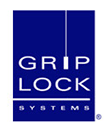Industry News
De-Lamping – An Achilles Heel For The Ballast-Compatible LED Tube
October 19, 2016
One of the largest universities in Florida rolled out its energy-efficient lighting pilot project after awarding to a third-party dual-mode T8 LED tube vendor that had touted a 10-year warranty and its broad ballast compatibility. The facilities head was dumbfounded when one of three LED tubes in the fixture failed on almost all fixtures, just three weeks after the installation. The manufacturer couldn’t offer any explanation on the massive failure. So much for its 10-year warranty and ballast compatibility claims.
A closer examination of the situation revealed that the fixture had been de-lamped. The fixture used a 4-lamp ballast, and only three LED tubes were used. As a result, the 4-lamp ballast was overdriving the three LED lamps, and burned out the LED driver prematurely over a short period of time.
Since the LED tube in use was a dual-mode LED tube, it was conceivable to solve the problem by removing the ballasts and operating each LED tube independently on AC line voltage, but there was another issue. A teaching building had been selected for the pilot project, and the lights were required to stay lit 24x7 in all study rooms and hallways; but the selected dual-mode LED tube didn’t have anti-shock protection, and couldn’t be safely installed without turning off the centralized lighting control for the entire building. This was unacceptable to the building manger. So the vendor’s dual-mode promise for the LED tube also failed the end user.
“The ballast-compatible LED tube is known to have three disadvantages: ballast incompatibility, ballast energy consumption, and ballast maintenance cost,” stated Dr. Matthew Maa, VP Aleddra LED Lighting. “The fourth problem of de-lamping on the ballast-compatible LED tube will catch many end users by surprise. De-lamping is the practice of using fewer LED tubes than the original number of T8/T12 fluorescent lamps. Since LED efficacy (lumens per watt) is continually improving, de-lamping can achieve an even higher energy savings while maintaining a suitable lighting level. The unintended consequence of de-lamping is that the ballast will over-drive the fewer LED tubes, and the lesser quality ballast-compatible LED tubes will quickly show their true color. The dual-mode LED tube is a safer bet when planning ahead, because it saves organizations from being held hostage to the ballast-compatible LED tube. As the case above illustrates, facilities managers should use a true dual-mode tube with anti-shock protection.” The demonstration video below provides more detail:
Aleddra’s SureFit DBA LED tube is the only dual-mode LED tube that has two UL certificates: one for the ballast operation and the other for operation on AC line voltage. Its patented safety switch design provides anti-shock protection for both scenarios. It’s been widely proven to be the safest LED tube on the market, and now becomes the best de-lamping option to prevent liabilities and additional cost. It’s also qualified for the new DLC 4.0 technical requirements. Click here for the technical specification.
For more information on the SureFit DBA tube, please email [email protected] or call us at 425-430-4555.









































